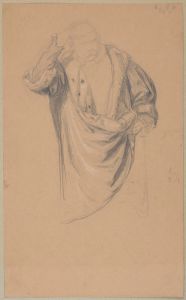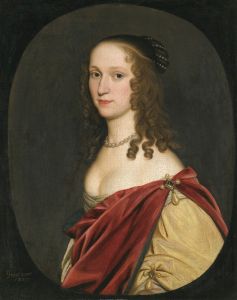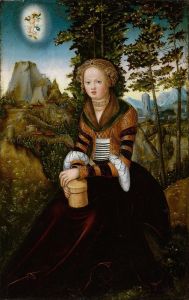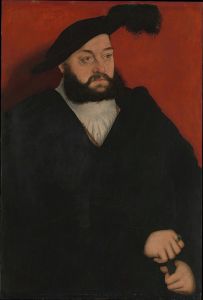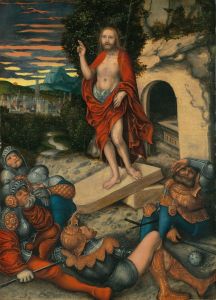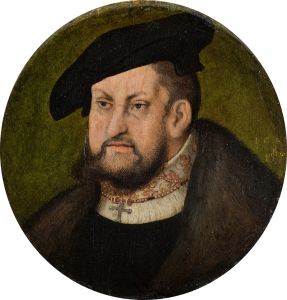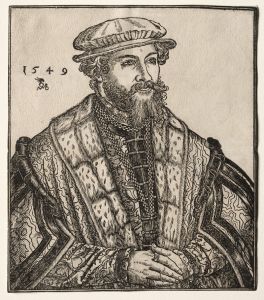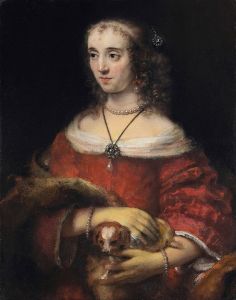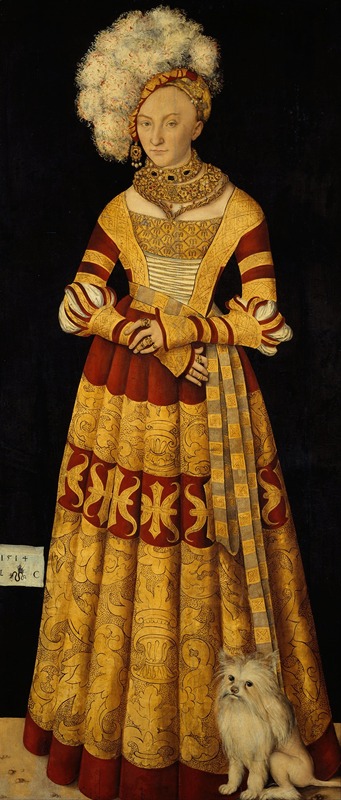
Duchess Katharina von Mecklenburg
A hand-painted replica of Lucas Cranach the Elder’s masterpiece Duchess Katharina von Mecklenburg, meticulously crafted by professional artists to capture the true essence of the original. Each piece is created with museum-quality canvas and rare mineral pigments, carefully painted by experienced artists with delicate brushstrokes and rich, layered colors to perfectly recreate the texture of the original artwork. Unlike machine-printed reproductions, this hand-painted version brings the painting to life, infused with the artist’s emotions and skill in every stroke. Whether for personal collection or home decoration, it instantly elevates the artistic atmosphere of any space.
"Duchess Katharina von Mecklenburg" is a painting by the renowned German Renaissance artist Lucas Cranach the Elder. Created in 1514, this portrait is a significant example of Cranach's work and the Northern Renaissance style. Lucas Cranach the Elder was a prominent painter and printmaker in the early 16th century, known for his portraits, religious subjects, and mythological scenes. He served as the court painter to the Electors of Saxony for most of his career, which provided him with numerous prestigious commissions.
The subject of the painting, Katharina von Mecklenburg, was a member of the noble House of Mecklenburg. Born in 1487, she was the daughter of Duke Magnus II of Mecklenburg and Sophie of Pomerania. In 1512, Katharina married Henry IV, Duke of Saxony, which elevated her status and made her a prominent figure in the Saxon court. This marriage was part of the intricate network of alliances among German nobility during the period.
In the portrait, Duchess Katharina is depicted with the elegance and poise befitting her noble status. She is shown in a three-quarter view, which was a common compositional choice for portraits of the time, allowing the artist to capture both the likeness and the personality of the sitter. Katharina is dressed in luxurious clothing, indicative of her high social standing. Her attire includes a richly adorned gown with intricate patterns and a fur collar, which were symbols of wealth and nobility. She also wears a headdress, which was typical of noblewomen's fashion in the early 16th century.
Cranach's attention to detail is evident in the meticulous rendering of Katharina's garments and accessories. The texture of the fabrics, the sheen of the fur, and the delicate embroidery are all depicted with great skill. Cranach's use of color is also notable; he employs a rich palette to enhance the opulence of the subject's attire and to create a striking contrast with the dark background, which serves to highlight Katharina's figure.
The painting is also significant for its psychological depth. Cranach was adept at capturing the individuality and inner life of his sitters. In this portrait, Katharina's expression is serene yet introspective, suggesting a sense of dignity and self-awareness. Her direct gaze engages the viewer, creating a sense of immediacy and presence.
"Duchess Katharina von Mecklenburg" is housed in the Kunsthistorisches Museum in Vienna, Austria. The museum's collection includes numerous works by Cranach, reflecting his importance in the history of European art. This portrait is an excellent example of Cranach's ability to combine detailed realism with a sense of grace and nobility, making it a valuable piece for understanding the art and culture of the Northern Renaissance.
Overall, Lucas Cranach the Elder's portrait of Duchess Katharina von Mecklenburg is a masterful representation of both the artist's skill and the subject's noble status. It remains an important work for the study of Renaissance portraiture and the depiction of European aristocracy.





